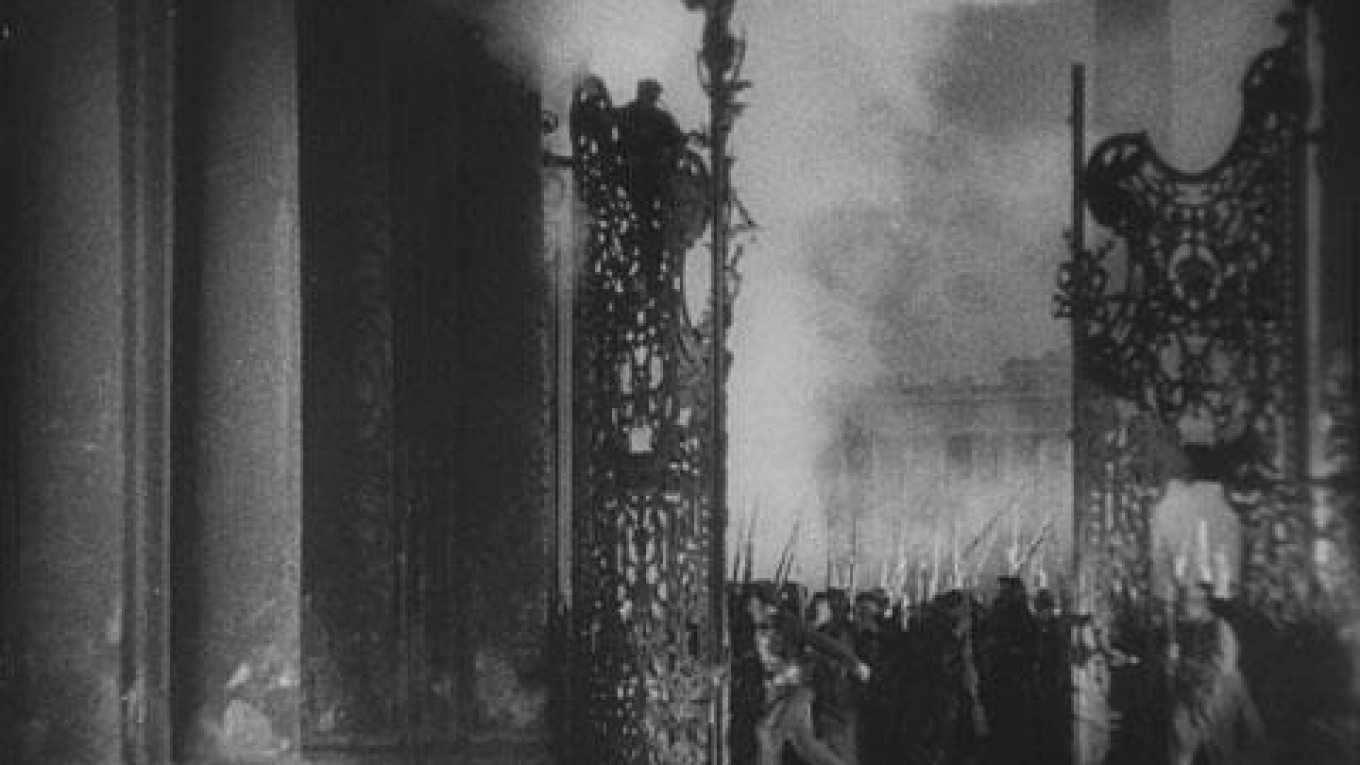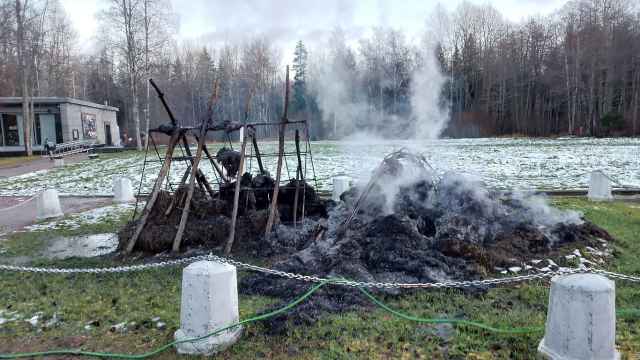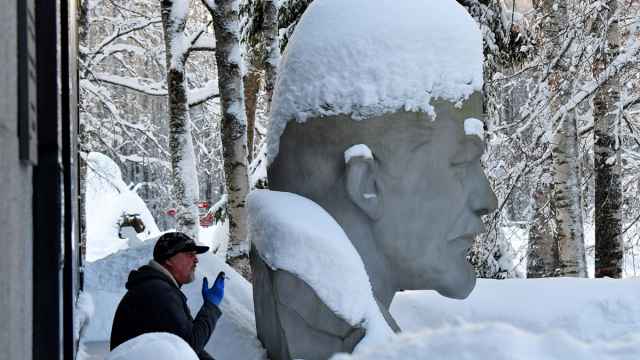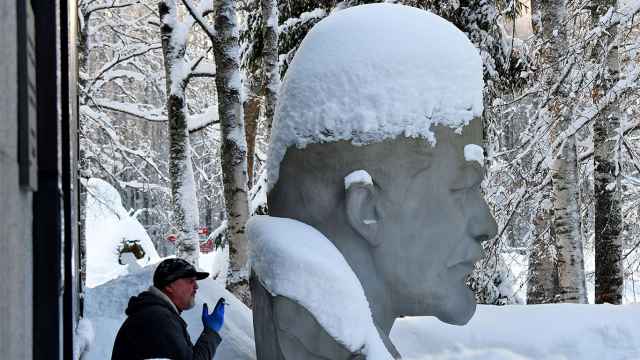Vladimir Lenin, political mastermind of the 1917 Bolshevik Revolution, once said, “While our people are illiterate, the most important forms of art for us are cinema and circus.” This no-nonsense, somewhat cynical approach seems to be the guiding principle behind the public festivities organized in St. Petersburg — “the cradle of the 1917 Revolution” — on its 100th anniversary.
“If paintings have souls, they must be shrinking now,” said St. Petersburg photographer Alexander Belenky as he stood at the Palace Square in the evening of November 5, as the deafening sounds of rap music vibrated the square and everyone in it. Belenky and hundreds of other spectators were looking at images of glaring red flags and gigantic fierce faces of Bolsheviks projected on the walls of the General Staff Building. The show was part of an event conceived and produced by the Dance Open Company, with graphics by the French agency Cosmo AV and support from the city government.
November 7 marks 100 years since the Bolsheviks captured the Winter Palace and declared themselves victorious. This date, which was once a time of nationwide demonstrations, is no longer a public holiday in Russia. It was replaced by National Unity Day, which is celebrated on November 4, and is essentially a nod to the events of 1612, when massive popular uprising expelled Polish occupation from Moscow.
Avoiding Controversy — Or Not
An anniversary is always a great excuse for a party, especially if you live in cold climate and under sunless skies. Russians traditionally like their celebrations to be big. But revolution and political riots are a sensitive subject in Russia, so it was clear that the state would refrain from sponsoring any grand-scale events.
And so, perhaps predictably, the centennial of the Russian Revolution has gone largely commercial and populist. To play it safe, the Dance Open Company issued a statement in which the organizers distanced themselves from politics and officially declared the show “non-judgmental.”
Fashion designers, restaurant managers and porcelain makers are flirting with red, and almost no one seems to be seeing red — except for the few extant opposition activists and politically conscious descendants of victims of political repression.
On Nov.7, Peter and Paul Fortress is hosting a scarlet fashion show by the renowned St. Petersburg designer Lilia Kisselenko, who otherwise creates garments almost exclusively in black. Titled “In Red Tones,” the show will be part of the opening ceremony of a new exhibition tracing the history of festive decorations in the city on Revolution Day from 1918 until 1987. During those years, the Soviet authorities brought some of the country’s most talented artists and artisans —selected from those who escaped the purges — to work on the outdoor designs for the November 7 demonstrations, rallies, concerts and other festivities.
In another kind of revolution, the Grand Hotel Europe is luring diners to its famous Caviar Bar by declaring that on the occasion of the Revolution Centennial the restaurant has revamped its dining concept, and its signature Egg in Egg dish has been given a revolutionary new presentation. The Imperial Porcelain Factory has released a limited edition of porcelain figurines inspired by the striking propaganda items created a century ago to make Bolshevik ideology appealing and affordable for the common people.
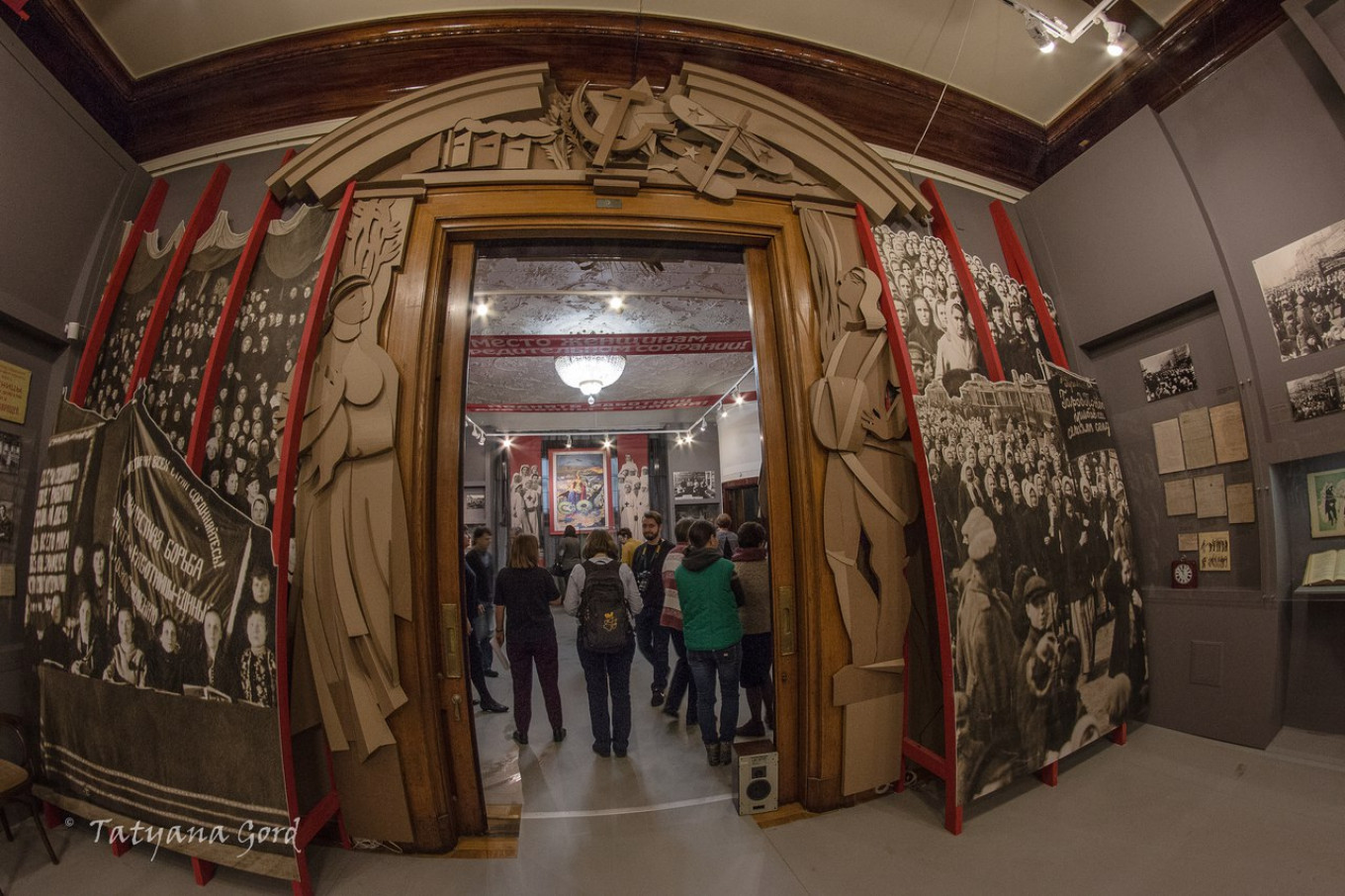
Myths and Realities of the Revolution
Reflection and analysis can be found, however, if there is an interest. The Museum of the Political History of Russia is hosting a special exhibition entitled “Women and the Revolution” that investigates the role of women in the revolution and weighs the losses and gains for women under the Soviet regime. “The feminist angle is very relevant in modern Russia, and the female face of the revolution is worth examining for many reasons,” historian Alexander Smirnov, the exhibition’s curator, told The Moscow Times. “Russian women were deeply involved in preparing the revolution, and many of them were directly involved in carrying out terrorist attacks against the tsarist regime. They paid a high price, yet the Soviets, when they came to power, never allowed women to occupy any significant positions in leadership. Male bosses secured decision-making jobs and kept women at the bottom level. The display is also a sobering reminder of the fact that many of the achievements that the Soviets bragged about had been launched during the tsarist regime or had been first implemented by other countries — for example, Russian women have had maternity leave since 1912, and the social security insurance system was not invented by the Bolsheviks, but emerged in Germany and England in the end of the 19th century.”
Many stories about the Russian revolution were later dispelled as myths, and even the famous storming of the Winter Palace that the world knows from Sergei Eisenstein’s classic silent film “October, or Ten Days that Shook the World,” was just a performance.
“It was not a tricky task at all to come and arrest the Provisional Government. But in every decent revolution something must be stormed, and so the job was done — by the director Eisenstein, that is,” Mikhail Piotrovsky, director of the State Hermitage Museum, told The Moscow Times. “Raging Bolsheviks never climbed over the gates; they entered the palace through the doors, without much of a rush, and the few guards there did not offer a strong resistance.”
Despite the truth, Eiseinstein’s compelling picture lived on, and for decades it even supplanted real history for millions of people in Russia and beyond. “In the 1960s the country’s history books contained the gate-climbing images from the film, which were presented as documentary photos from 1917,” said Georgy Vilinbakhov, deputy director of the State Hermitage Museum.
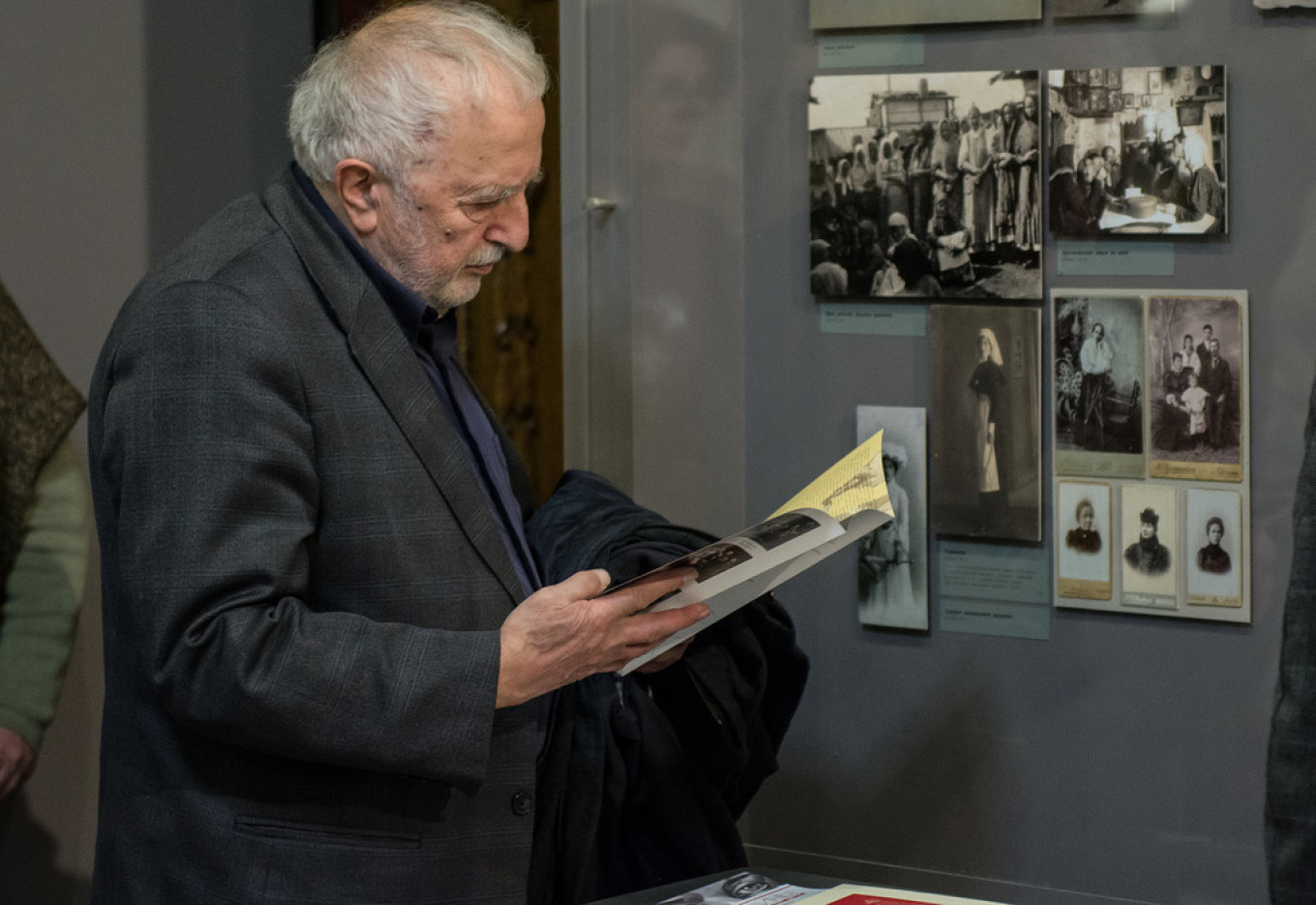
In History’s Footsteps
The Hermitage is marking the jubilee with an exhibition called “History Was Made Here. Hermitage and the Winter Palace in 1917,” which brings together a collection of artefacts that were witnesses, as it were, to the events that occurred here. Some of the exhibits, including cannons and an armored car, greet visitors outside the museum, plunging them into the atmosphere of the main display, which takes up much of the ground and first floor. Revolutionary posters, personal belongings and photographs recreate the atmosphere of the palace takeover and the turmoil that followed. One of the most powerful items on display is a portrait of tsar Alexander II punctured with holes from Bolshevik’s bayonets.
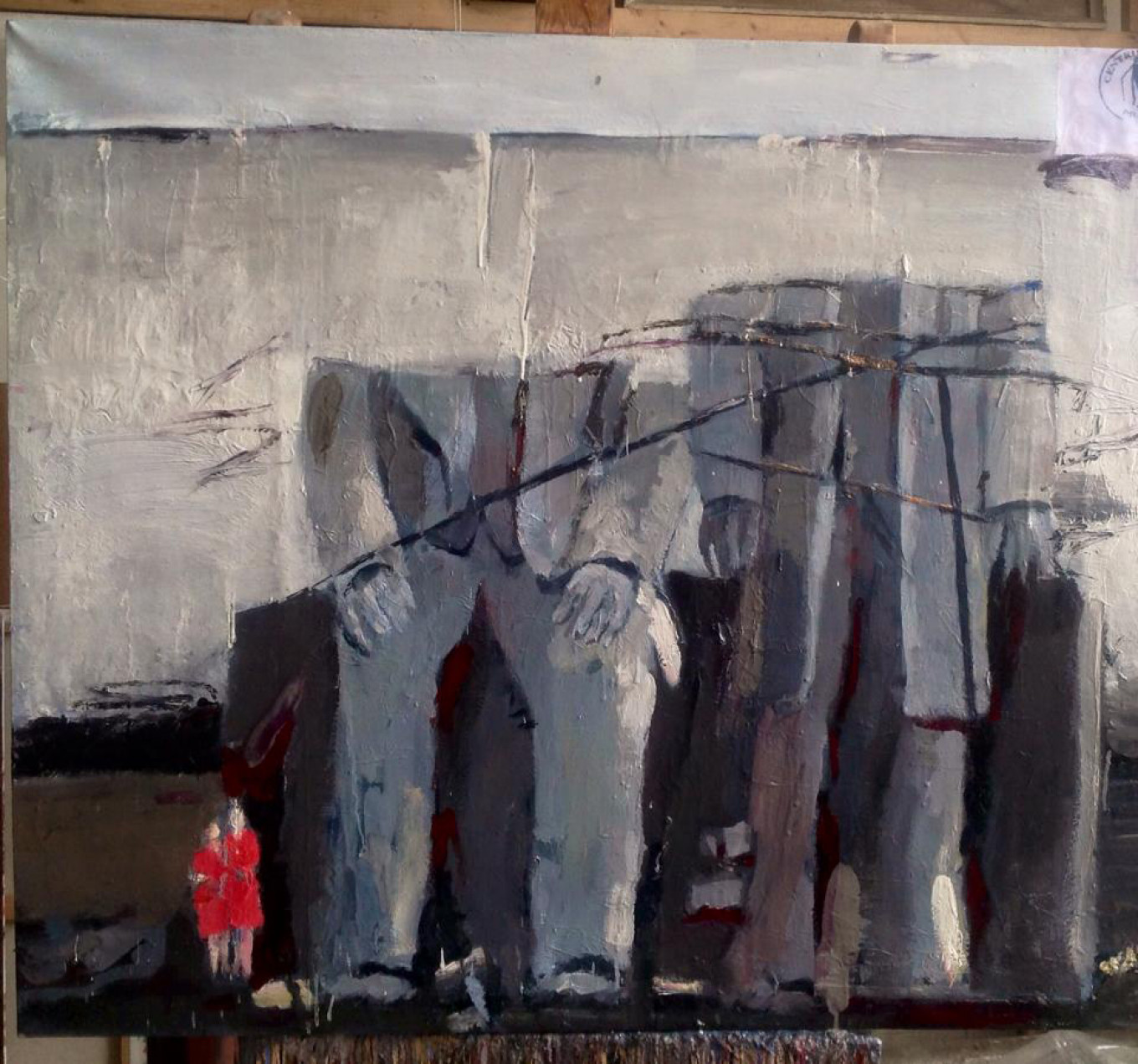
Art and Revolution
“One Hundred Years of Solitude” is how the curators at the Erarta Museum of Contemporary Art are reflecting on the years that have passed since the 1917 revolution. The museum invited contemporary Russian artists from St. Petersburg, Moscow, Novosibirsk, Krasnoyarsk, Lipetsk, Saratov, Odessa, Berlin and Brussels to offer their takes on the Soviet myths and stereotypes, the devastating human, political, or social costs of regime change. Some of the artists knew Soviet rule intimately, while the others had just brief contact with it. “Erarta is a modern museum, so we opted not to focus on artefacts from 100 years ago. Instead we thought it would be worthwhile to reflect on the long-term consequences of the revolution,” Vladimir Nazansky, the exhibition’s curator, told The Moscow Times. “One of the key consequences was the country’s isolation — for the larger part of the past 100 years, Russia has lived in confrontation with many other countries or has been placed under some kind of sanctions or pressure. The display has a chronological structure, but it is essentially a collection of reflections, emotions and thoughts on the theme of solitude rooted in the events of 1917.”
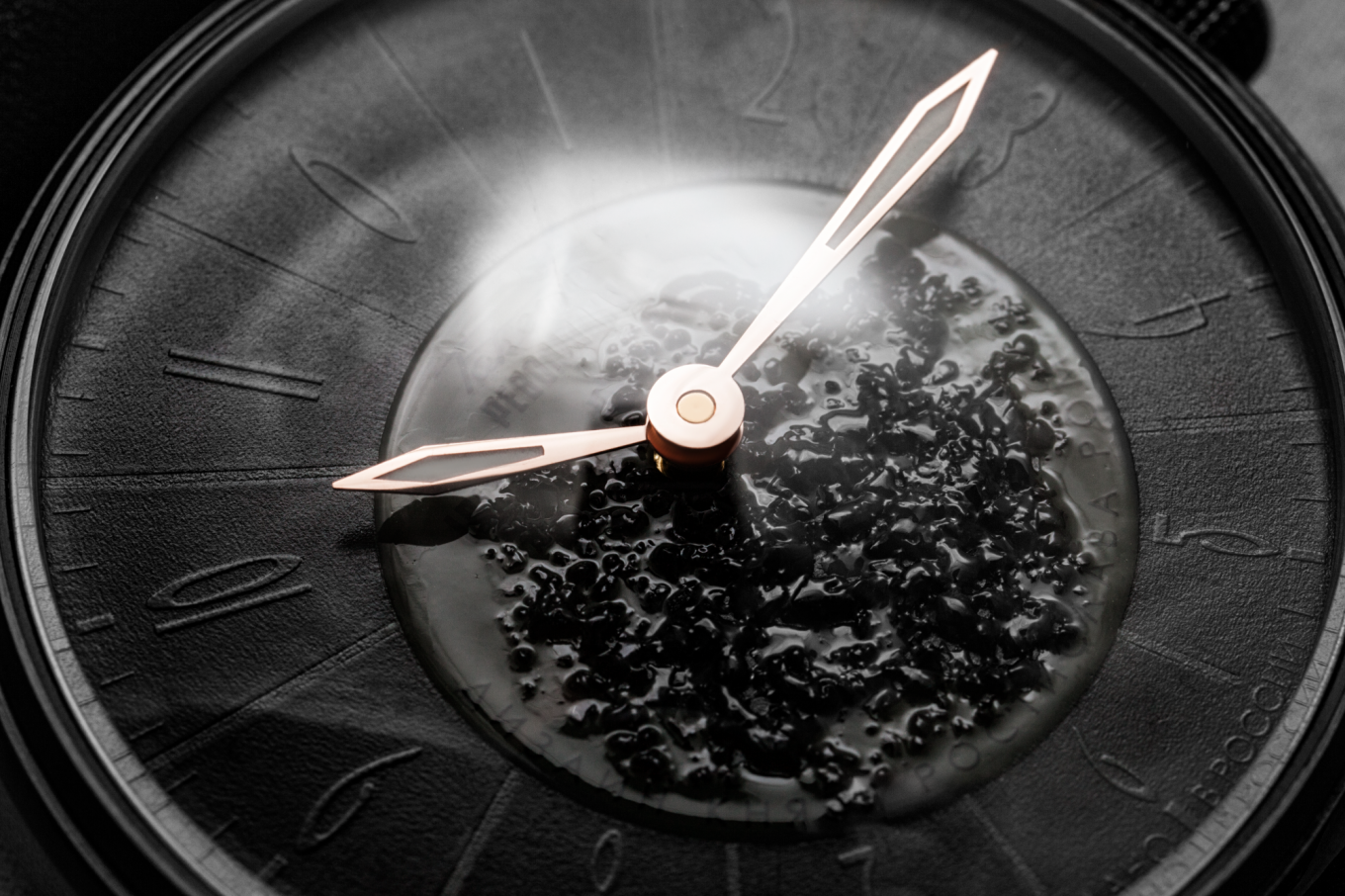
Red or Black, Celebratory or Mournful
The color of the festivities, from light projections to fashion shows and flags on display at the Hermitage, is scarlet. Red is presented as the symbol of ambition, energy, rage and change. Few people reflect on red as the color of blood, and their voices are largely unheard. But one of them is Prince Rostislav Romanov, a painter and a descendant of the House of Romanov, who issued a statement calling on the Russian people not to celebrate an event that brought the country such bloodshed, intellectual genocide and political persecution.
A small red drop of blood marks a new black watch that Romanov himself designed for the Raketa Watch Factory in St. Petersburg on the occasion of the Revolution Centennial. Before the revolution the factory belonged to the Romanov family, and where Romanov is now an advisor to the creative department.
“We cannot afford to ignore the anniversary, yet we must not celebrate it,” Romanov said. “The revolution was a horrifying tragedy, which led to deep suffering and death of millions of people from all strata of Russian society. We should look back on those events with grief and mourning. Every person who perished in the purges is the victim of the revolution.”
A Message from The Moscow Times:
Dear readers,
We are facing unprecedented challenges. Russia's Prosecutor General's Office has designated The Moscow Times as an "undesirable" organization, criminalizing our work and putting our staff at risk of prosecution. This follows our earlier unjust labeling as a "foreign agent."
These actions are direct attempts to silence independent journalism in Russia. The authorities claim our work "discredits the decisions of the Russian leadership." We see things differently: we strive to provide accurate, unbiased reporting on Russia.
We, the journalists of The Moscow Times, refuse to be silenced. But to continue our work, we need your help.
Your support, no matter how small, makes a world of difference. If you can, please support us monthly starting from just $2. It's quick to set up, and every contribution makes a significant impact.
By supporting The Moscow Times, you're defending open, independent journalism in the face of repression. Thank you for standing with us.
Remind me later.


